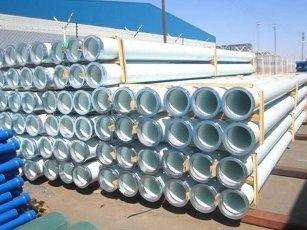DPI Plastics launches a new user-manual to assist clients in overcoming the complexities surrounding PVC piping systems
Engineers and contractors involved in the design and installation of PVC piping systems are now able to benefit from a new manual that has been launched by DPI Plastics, a leading manufacturer of water reticulation, drainage and pipe-fitting systems.
The ‘Design Guidelines for PVC Pressure Pipe Systems’ manual, launched by DPI Plastics in February 2011, is an updated version of the company’s previous ‘Pressure Manual’, and includes additional information on new PVCO technology, guidelines on solvent cement welding, modifications to references of standards and an introduction to the code of ethics and conduct drawn up by the South African Plastic Pipe Manufacturers Association (SAPPMA), of which DPI Plastics is a founding member.
DPI Plastics technical and product manager for pressure pipe systems, Renier Snyman points out that the manual is provided free-of-charge to all DPI Plastics clients, as part of an overall value-added service package. “The Design Guidelines for PVC Pressure Pipe Systems manual is ideally-suited to design engineers, municipal engineers and contractors installing piping systems, and is available for free in CD format, and online,” he explains.
Snyman adds that the manual serves as a one-stop guide for all the relevant and comprehensive information relating to PVC pipes. “The guidelines in the manual cover the physical properties, design requirements, chemical resistance, correct laying methods and advice on installation, in one concise manuscript that will benefit numerous industry players,” he continues.
The 48-page manual serves as a new-and-improved version of DPI Plastics’ previous manual, which was launched in 2000, notes Snyman. “The previous manual was launched when PVCM was the product-of-choice in the plastic piping market. Since then; however, PVCO has been introduced to the Southern African market and, as a result, the manual includes detailed information on the new technology.”
Also added to the manual are sections on “green” issues, which are much more important to engineers and designers today when compared to a decade ago. “The world as a whole is much more aware of the importance of looking after our planet, conserving energy and reducing our consumption,” explains Snyman. “We have; therefore, included – for example - tables of comparison showing power consumption, material efficiency and pumping costs for various piping systems so that informed, planet friendly choices can be made when designing for the future.”
Snyman believes that all of the hard work and effort has paid off, and he notes that the end-product is far more user-friendly. “The previous manual contained up to 30 flow and friction charts, catering to each pipe size. This created a cluttered effect and, as a result, we decided to replace these charts with nomograms containing typical pipe sizes for PVCU, PVCM and PVCO products, making it more user-friendly and easier to understand,” he explains.
Snyman notes that the manual has been well-received by the market. “These new guidelines are long-overdue, and many clients in the industry have expressed their satisfaction regarding the launch of the new manual,” he says. “The manual has always been popular in the industry, as it ultimately ensures that the products are designed and installed in the correct manner, which results in them operating problem-free.”





















